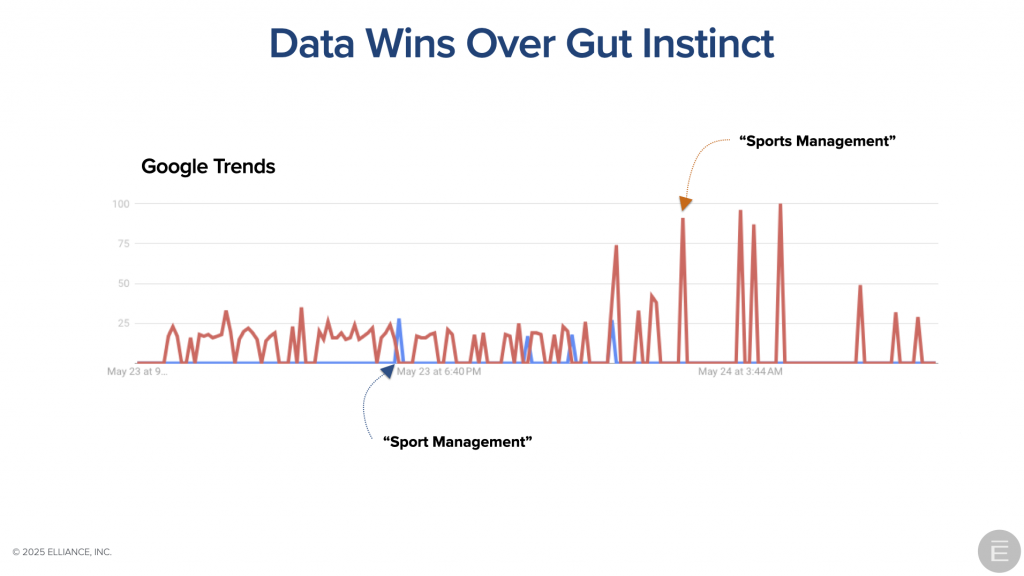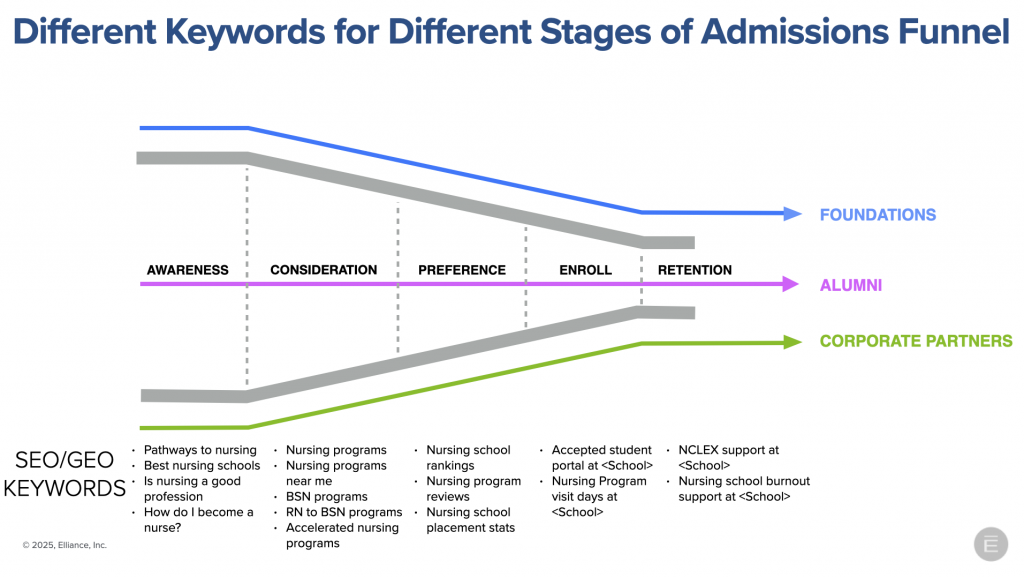| May 31, 2025
The Art and Science of Higher Education SEO Marketing for Colleges and Universities

The art and science of higher education SEO marketing begins with understanding what prospective students, faculty, staff, partners and funders truly seek—not just keywords, but clarity, purpose, and an ambitious path forward. The science is precision: using data to anticipate intent, select right keywords, structure content, and harmoniously marry code and content. The art aligns content with how real students search—combining long-tail and high-traffic keywords, adapting to dialects and intent, and guiding prospects from curiosity to conversion with data-driven precision.
Science of Higher Education SEO Marketing
The science of higher education SEO is the disciplined application of analytical insight to strategic positioning. It transforms guesswork into precision by marrying data, technology, and user behavior to shape institutional visibility. At its core, it’s about consistently making better choices—what to optimize, whom to target, where to compete—based on feedback loops, measurement, and pattern recognition.
Strategic Prioritization of Programs
Use search demand and conversion data to prioritize which academic offerings deserve focus—making marketing a reflection of institutional ambition and marketplace need.
Empirical User Understanding
SEO science brings structure to how prospective audiences behave in digital spaces—tracking keywords, pathways, and pain points to inform design and content.
Keyword Research & Intent Mapping
Start with searcher intent. Behind every query is a hope, a problem, a future. Build content that answers with elegance. Identify what prospective students, parents, faculty, staff, partners, funders and influencers are searching for — and why. Tools like Google Keyword Planner, SEMrush, or Ahrefs help uncover high-value keywords tied to programs and outcomes.
Technical SEO Implementation
SEO isn’t one thing—it’s everything. Site speed, responsive design, architecture, metadata, voice search. Optimize site speed, mobile responsiveness, crawlability, indexability, site architecture, and schema markup — the technical foundation of a healthy site.
On-Page Optimization
Ensure headings, metadata, internal linking, and keyword placement are aligned to user intent and optimized for both humans and search engines.
Conversion Rate Optimization (CRO)
Test and refine CTAs, forms, page layouts, and messaging to improve inquiry submissions, application starts, and yield.
Link Building & Domain Authority Growth
Earn highest quality backlinks from trusted sources (e.g., media, .edu domains, .gov domains, influencers) to improve credibility and rankings.
Local SEO & GEO-Targeting
Optimize for location-specific searches using Google Business Profiles, local keywords, and geographic segmentation—especially useful for regional programs and campuses.
Compliance and Accessibility
Ensure SEO efforts align with ADA requirements and accessibility best practices for inclusive user experiences.
User Behavior Tracking
Track click paths, heatmaps, session recordings, and goal completions to understand user flow and identify friction points.
Content Performance Analysis
Use analytics tools (e.g., Google Analytics, Looker Studio, Matomo) to assess content engagement, bounce rates, and conversions, adjusting strategy accordingly.
Search Engine Algorithm Optimization
Understand and adapt to Google’s ranking factors (e.g., Core Web Vitals, mobile-first indexing, helpful content updates, voice search, AI search) to improve SERP positions.
Art of Higher Education Marketing SEO Marketing
The art of higher education SEO marketing lies in empathetically understanding how prospective audiences translate their ambitions into searches. It’s about translating that insight into elegant, resonant content that aligns institutional offerings with real human intent. At its best, it balances intuition and data to focus on the right keywords. Four examples:
The Long Tail SEO
The strongest search marketing campaigns pursue rankings for a combination of high-traffic phrases that are likely to bring many visitors to the site as well as highly-specific, 3- or 4-word phrases that are more likely to convert a targeted buyer. The fastest way to secure top rankings for short high-traffic phrases is by achieving rankings for many long tail keywords which also out-convert short phrases.

Different Terms, Same Meaning Across Borders
Great SEO isn’t about choosing between regional dialects or academic labels — it’s about embracing both. By mapping different terms to the same intent, we bridge cognitive gaps and design a system that meets people where they are, not where we wish they were. As an example, US students tend to look for “MS in information systems management” while international students might look for “MS in information technology management”.

Data Wins Over Gut Instinct
Keyword trends reflect how real people think and search — not how we wish. Rather than rely on gut instinct, we use data to reveal patterns, then design content meeting users where they are. It’s not guesswork; it’s a thoughtful response to the market’s actual language. While a professor’s book may be titled “Sport Management,” ranking the program requires embracing market thinking—optimizing plural “Sports Management” to align with higher search demand and real-world language patterns.

The Right Words at the Right Moment.
Great marketing meets people where they are. At every stage of the admissions journey — from curiosity to commitment — students ask different questions. Mastering SEO/GEO means anticipating those questions with precision and answering them gracefully. As an example, there are a lot of nursing programs out there. How does someone with that calling cut through it all to find the one that just fits them perfectly. It starts with understanding their journey. We’ve mapped it out. Here are the keywords that define each step to your undergraduate nursing program. For your program to surface on Google, ChatGPT, Perplexity and Gemini, you must create content and optimize it using the techniques listed earlier.

If you are too busy to defeat the SEO Goliaths in your space, review our high performance SEO services and higher education marketing capabilities, and consider partnering with us. We won’t disappoint.
